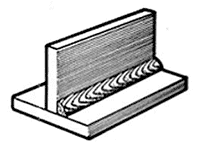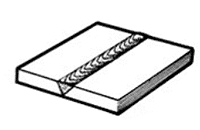1⁄35How to Create Accurate Weld Effects

Introduction
This article is a culmination of ongoing work that has been carried out on a modelling project as well as numerous discussions on the same subject at the Tyneside IPMS UK model club. In this work we shall describe one technique that has been developed to replicate scale welding based upon real-life methods of welding processes. We shall describe the tools and materials used for such work and then illustrate in practice both some simple and complex examples of scale welding. The article will be finished with a brief description of other methods, both scratch building and aftermarket products that can also be used to replicate such effects.
Basic Welding Techniques
Virtually all types of welded joint are classified into two major types:
|
Fillet Weld |
 |
|
Butt Weld |
 |
Other weld types often referred to are lap welds, corner welds, edge welds
etc but basically these are just variations of the two weld types above. Note
that in our work here we are not concerned with the physical process of welding
but only the visual product that remains once the welding process has been
completed.
In all cases of replicating weld seams some thought must be made prior to actual
application as to what kind of effect we are trying to achieve. This must take
into account the materials to be welded, the circumstances under which work
would have taken place and the skill level of the welder. Whilst the latter
three points may seem a bit excessive to be concerned with, if you are trying to
make your scale welds as accurate as possible they should be considered. With
respect to materials and armoured vehicles we are usually looking at either the
welding of armour plates or on-vehicle accessories. The welding of armor plates
is usually done under factory conditions with skilled personnel. This should
mean that welded joints are very uniform and neat; i.e. the welding of armour on
German tanks especially in the early years of World War 2. This can be
contrasted with the skill level of Russian welders of the same period whose main
tasks were not necessarily to do things perfectly but instead to complete them
fast. If you look at welds on Russian vehicles of this period we can see on
average that the weld quality on AFV’s was of a very mixed quality. As the
project work to be carried out here is on such a Russian vehicle of this time
period we will attempt to show weld effects of both good and poor quality.
Some examples of weld joints that can be easily replicated and are relevant to
all types of vehicles of all time frames can be illustrated below.










